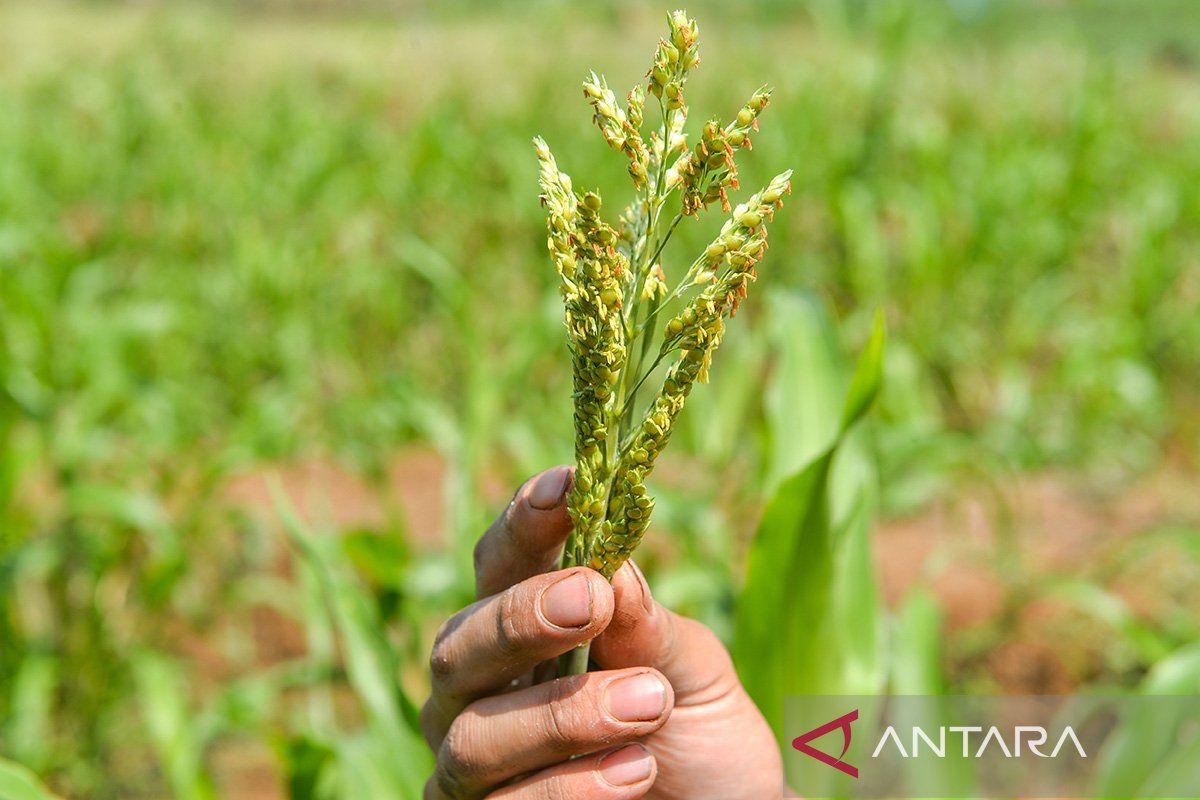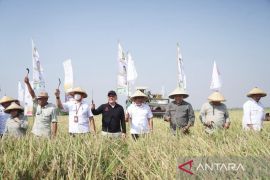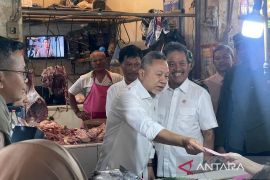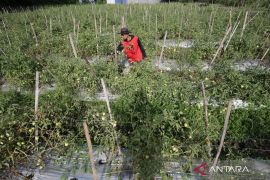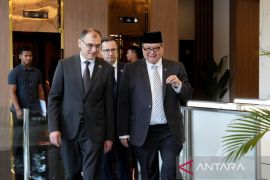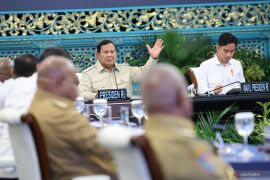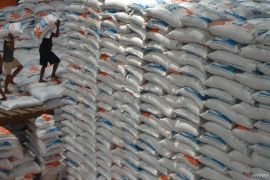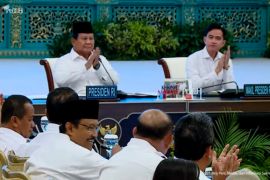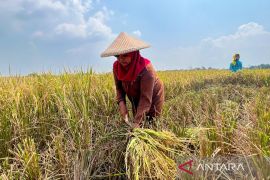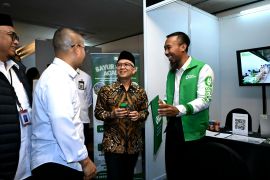Nevertheless, the government is also encouraging food diversification, encouraging people to create variations in their food consumption.
This effort aims to expand food options by utilizing various local food commodities.
Food diversification can also be a strategy to create broader and more flexible food security so that rice self-sufficiency can be achieved as the stock is always sufficient.
Food security
Indonesia's annual rice consumption reaches 30 million tons. To meet the need, the government is importing 3.6 million tons in 2024, some of which are included in the government's rice reserves.
The government has readied strategies to reduce rice imports, such as the food estate program, which is part of the national strategic projects during the administration of the 7th President Joko Widodo.
The government continues this policy under the presidency of President Prabowo Subianto with its food self-sufficiency program.
To realize the goal, the Ministry of Agriculture has set two strategies to realize food self-sufficiency: increasing productivity (intensification) and expanding planting areas (extensification).
Despite the efforts, the issue of food diversification should not be overlooked if the country is looking to achieve food self-sufficiency.
An agricultural observer from the Indonesian Political Economy Association (AEPI), Khudori, also agreed with this view while noting that food estate or rice field development aims to ensure that Indonesia has adequate food or agricultural land to realize resilience in the food sector.
Diversification is a mandatory step that Indonesia must take to ensure the country has resilience against shocks in food production or food crises.
Dependence on only several food commodities, such as rice, will have a major impact, especially in the event of a climate-caused disruption in production.
To this end, the food estate or the food self-sufficiency program must also include local food commodities, such as sago, sorghum, and breadfruit, to be developed.
Benefits of diversification
With food diversification, Indonesia can develop resilience against crises and problems in food production.
Diversification can also improve the economy, as food stocks are no longer supplied from abroad. The Ministry of Industry encourages small and medium enterprises (SMEs) to diversify food products that utilize local raw materials to increase added value.
The local food raw materials that SMEs can process include sorghum as a substitute for rice, ganyong (Canna edulis) for noodles, hotong (Setaria italica) for cereal, porang (Amorphophallus muelleri) for shirataki rice and flour, hanjeli (Coix lacryma-jobi) for yogurt and animal feed, taro as an ingredient for making cakes and bread, and cassava for various flours.
Those commodities can be used as flour for industries as they are easier to fortify and process into various types of food. So far, Indonesia still depends on wheat as a raw material for making flour.
In addition, diversification is considered to make carbon and water footprints smaller. Thus, it is more environmentally friendly.
Those local foods are often more accessible, affordable, and suited to local conditions, so they do not require much agricultural inputs such as chemical fertilizers or pesticides.
Nevertheless, implementing food diversification is not simple, as easy access to goods must be ensured. It means commodities used in food diversification must be accessible, reach remote areas, and be available during hard times.
What is also important is that the alternative commodities must be affordable and have stable prices to remain accessible to all, especially the poor and vulnerable groups.
So far, alternative food products such as porang and sorghum are not yet affordable. Only a few people can afford them. The processing equipment is still limited, so the selling value of processed porang in the market is high.
Khudori emphasized the importance of prices in the market being attractive and profitable. The market will drive farmers and business players upstream to supply goods.
Fiscal policy support is also needed so that products from local food commodities, such as flour, can compete in the market.
Apart from that, intensive research on alternative food products is also deemed necessary.
Government's efforts
The government has encouraged food diversification for a long time. The National Food Agency (Bapanas) already has a program for food diversification among people, namely the Diverse, Nutritionally Balanced, and Safe Food House program.
In addition, Bapanas encourages sago to become an integral part of national food security apart from rice. These programs have been carried out by Bapanas with education carried out from village to schools.
The National Research and Innovation Agency (BRIN) also succeeded in creating sorghum flour that can be fully processed into noodles and has the potential to reduce Indonesia's dependence on wheat flour from abroad as the raw material for noodles.
Until now, the Ministry of Agriculture continues to develop food diversification, especially for carbohydrate sources. However, most people still consider rice the only main food source.
The government is also striving to prevent fluctuations in rice availability. Hence, in the food self-sufficiency program, the main focus is rice.
"We do not want fluctuations, so like it or not, we have to resolve the rice issue first, and after that, we resolve issues related to corn, soybean, and others. Food diversification remains important," Deputy Minister of Agriculture Sudaryono remarked.
What must be underlined is that food diversification does not mean massively replacing rice, but instead, diversifying choices with cassava, sago, sorghum, porang, and others that are no less nutritious.
In essence, food diversification can reduce people's dependence on rice.
Educating people about the diversity of food is also important. This can be carried out in the smallest scope, such as at home, by serving local food or getting accustomed to consuming other sources of carbohydrates apart from rice.
Intense campaigns should also be conducted to open opportunities for local foods to play a role in maintaining national food security.
Related news: Food barn program must consider sociocultural aspects: BRIN
Related news: Cabinet retreat: Ministers discuss downstreaming, food security
Editor: Rahmad Nasution
Copyright © ANTARA 2024
